Table of contents
- Japanese motorcycles from 1960 to 1970 Peaceful conquest of Europe
- New motorcycle registrations in 1960: 15,000 units
- Honda CB 92 Benly Super Sport
- No. 1 Honda, No. 2 Suzuki, No. 3 Yamaha
- Kawasaki with a good dose of madness
- Bridgestone motorcycles
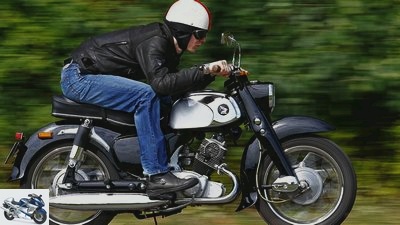
fact
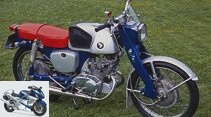
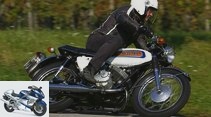
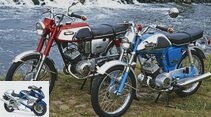
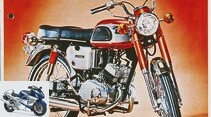
26th pictures
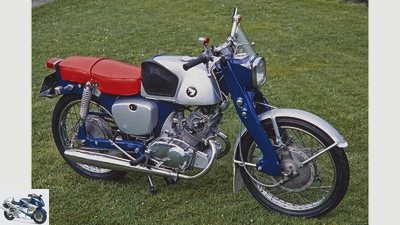
archive
1/26
The Honda CB 92 with 125 cm³ only convinced in 1960 with a breeze. And then the fans of sporty bikes.
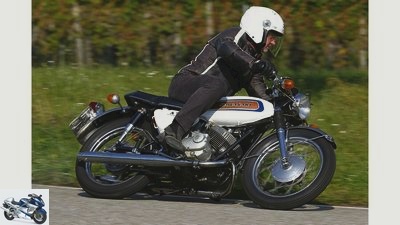
www.factstudio.de, Joachim Schahl
2/26
With 42 hp, the 1967 Kawasaki A7 Avenger was the most powerful 350. Thanks to the rotary valve control, the two-cylinder two-stroke engine already had a powerful start.
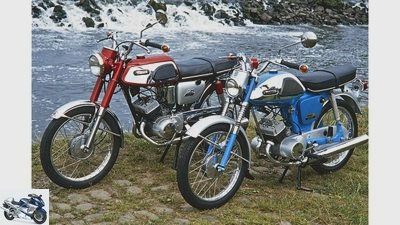
archive
3/26
Small but mighty: the Yamaha AS1 at the back, a YL-1 in front. In 1966, the 100 was the first Yamaha to receive a sample report.
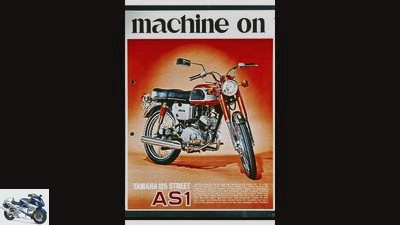
archive
4/26
Yamaha continuously expanded its model range. For 1967 the AS1 supplemented the model range with a 15 hp two-cylinder two-stroke engine. Mitsui also had the AS1 on offer.
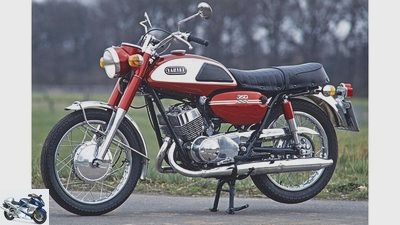
archive
5/26
Rapid model updates: from 1968 onwards, Yamaha replaced the YR1, which had only been introduced the year before, with the YR2 with a 36 hp 350 twin and five transfer ports.
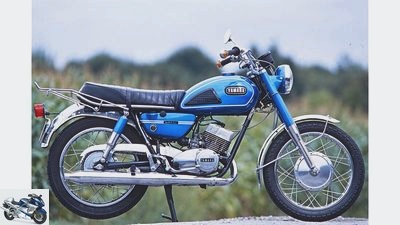
archive
6/26
Yamaha also pushed the further development of the 250cc two-cylinder engines. You can find out more about the DS-6 from 1969 in the article.
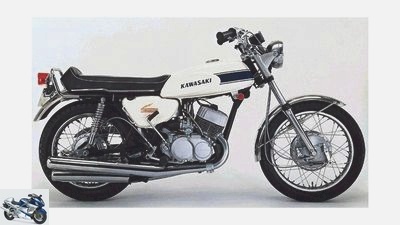
archive
7/26
The 60 hp Kawasaki H1 shocked competitors and riders with its impetuous power delivery in 1969.
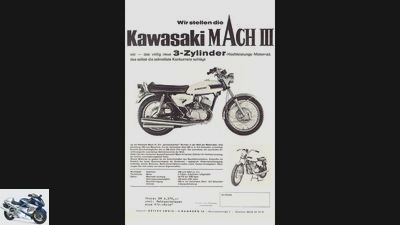
archive
8/26
Kawasaki H1.
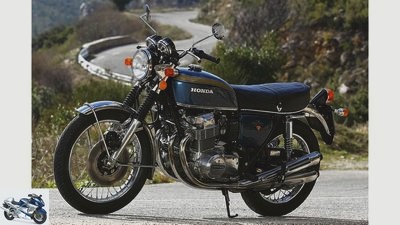
www.factstudio.de, Joachim Schahl
9/26
Commitment to performance: With the Honda CB 750 Four presented in autumn 1968 …
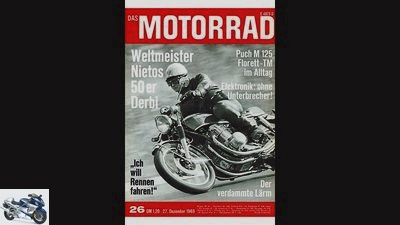
archive
10/26
… Japan ushered in the motorcycle boom of the next decade for us too.
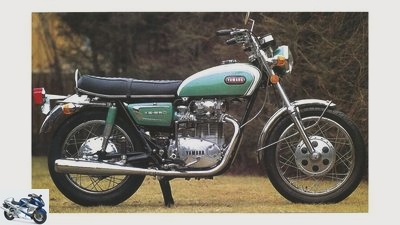
Schwab
11/26
Change of pace at Yamaha: In 1970 the XS-1 was the first four-stroke motorcycle of the brand, which had meanwhile become number two in Japan.
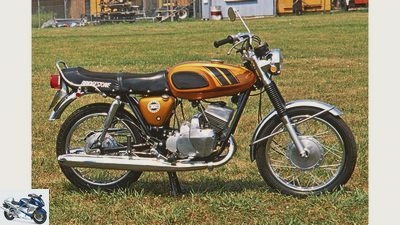
archive
12/26
Rubber parts and tire manufacturer Bridgestone was involved as a motorcycle manufacturer for a short time.
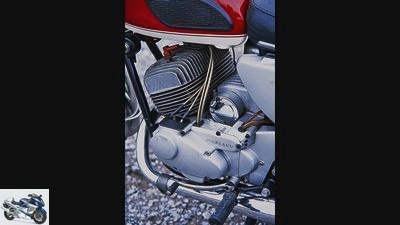
archive
13/26
… In this country, the 46 hp, high-torque two-stroke 500 was rarely seen.
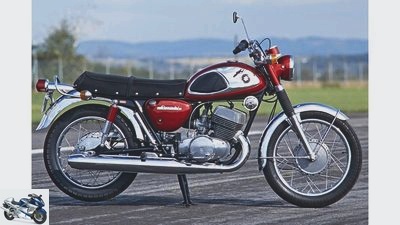
archive
14/26
The Suzuki T500 carried the addition “Cobra” in 1968 in the USA…
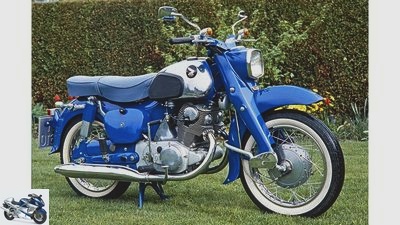
archive
15/26
Honda C 72 Dream: From mid-1959, the 250 was one of the first Japanese motorcycles in Germany – stylistically borrowed from the NSU Max.
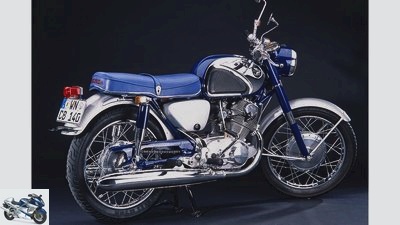
archive
16/26
From 1961 onwards it made for heart palpitations: after something like the Honda CB 72, which got 24 horsepower out of 250 cm³, sporty drivers were hungry.
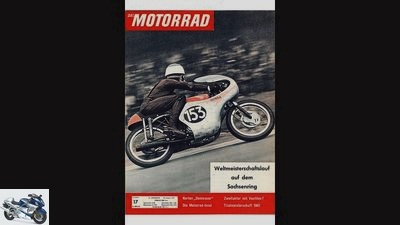
archive
17/26
Blast: Honda won the World Championships in the 125 and 250 classes in 1961 with Tom Phillis (cover photo) and Mike Hailwood.
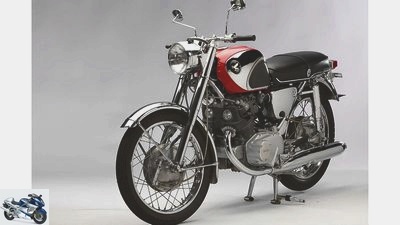
www.factstudio.de, Joachim Schahl
18/26
With 28.5 HP (according to SAE), the Honda CB 77 went one better in terms of performance. The displacement of the two-cylinder engine presented in 1961 had meanwhile grown to 305 cm³.
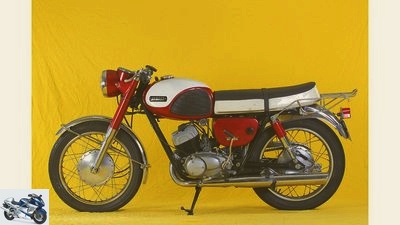
www.bilski-fotografie.de
19/26
In 1964, when the third largest Japanese manufacturer at that time, the signs were pointing to sport: The slot-controlled two-cylinder two-stroke engine of the Yamaha YDS-3 developed 26 hp at 7,500 tours.
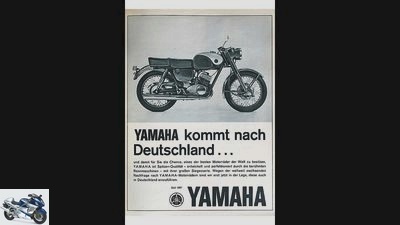
archive
20/26
As the second Japanese motorcycle manufacturer, Yamaha announced an importer for Germany at IFMA 1964. The YDS-3 was the first model of the brand, which was then marketed by the Mitsui trading company.
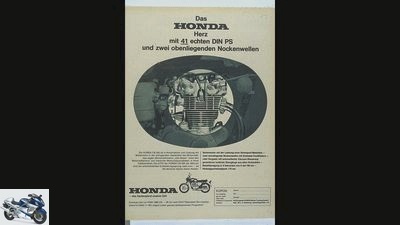
archive
21/26
With the reference to real 41 HP according to DIN, Honda Germany advertised the “magic horse of our time”.
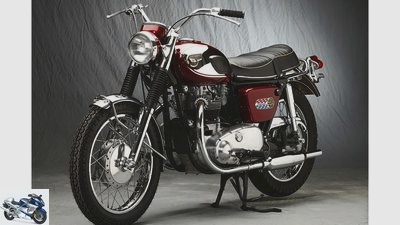
www.factstudio.de, Joachim Schahl
22/26
Kawasaki’s German premiere took place in 1966 when the Neckermann mail order company sold some Kawasaki W1s from the catalog…
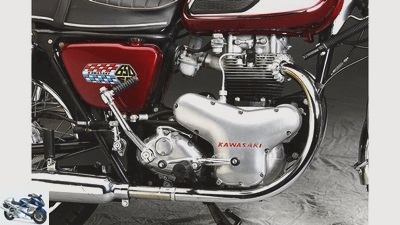
www.factstudio.de, Joachim Schahl
23/26
… The parallel twin was a further development of the 500 Meguro presented in 1959 – with the BSA A7 as a model.
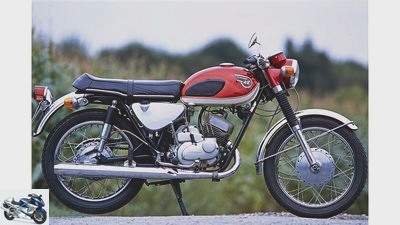
archive
24/26
From 1967 Kawasaki importer Detlev Louis offered the A1 Samurai in addition to the W1, a 250 with a rotary valve two-stroke twin-cylinder and 31 hp.
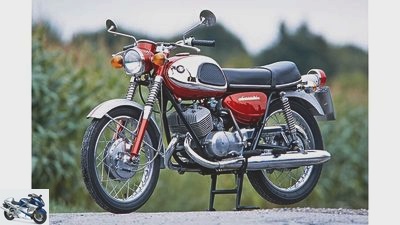
archive
25/26
In 1966, the Suzuki T20 with 29 hp, six-speed gearbox, separate lubrication and duplex brake was our sportiest 250.
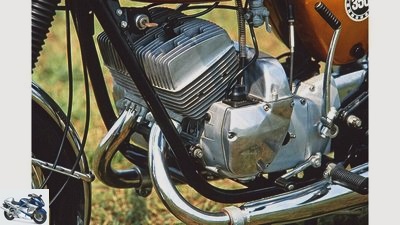
archive
26/26
1967: Slim, fast and classy: the Bridgestone 350 GTR with a rotary valve two-cylinder developed a whopping 40 hp (SAE).
motorcycles
Japanese motorcycles from 1960 to 1970
Japanese motorcycles from 1960 to 1970
Peaceful conquest of Europe
Content of
Almost unnoticed by the western world, Japan built up an enormous motorcycle industry after the war. In the mid-1960s, Honda and Co. dominated the US market. But Europe too could hope for a peaceful conquest.
03.03.2016
If Soichiro Honda had visited the NSU factory in Neckarsulm around 1960, this greatest mind in motorcycle history would have had doubts about his own mind. What he had considered to be a great example of well-organized mass production six years earlier, on the occasion of a study trip through Europe, was now clearly in the process of being carried out. Only scooters and mopeds reached significant numbers, Max and Maxi, on the other hand, the four-stroke engines that he once admired, left the factory in homeopathic doses.
Buy complete article
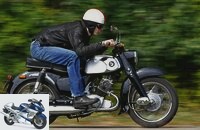
Japanese motorcycles from 1960 to 1970
Peaceful conquest of Europe
8 pages) as PDF
€ 2.00
Buy now
The visionary would have been even more surprised that the German manufacturer – the largest in the world with 350,000 units produced in 1955 – had not converted its world championship title with the two-cylinder Rennmax. In any case, these things had impressed him so much that in 1954 he promptly encouraged his engineers to develop high-revving ohc-Twins of medium displacement. He also put a pile of European racing components on their workbenches for analysis. On the other hand, he reported to the marketing people that Europe’s long-established companies only cooked with water and that he already knew where to pull the trigger. On the Isle of Man.
New motorcycle registrations in 1960: 15,000 units
In fact, Honda viewed racing, and the Tourist Trophy in particular, as the key to the global motorcycle market. Everyone knows today that they were right about Europe. And 1960? At least German bosses just laughed. As early as 1958, more cars than motorcycles were registered for the first time, and the trend is rising sharply. New motorcycle registrations in 1960 were 15,000 units. Since “the export can depend on many unpredictable things”, said NSU, “it has been decided not to tackle any new motorcycle models for the time being”. The Westerwald motorcycle, the practical companion through everyday life and the weekend, was dead and would never be resurrected. Agreed. However, he ignored the fact that many people clung to the motorcycle out of pure hobby, out of sportsmanship. Overlooked how they eagerly devoured reports from little Italian racers. It was only there that the designers seemed to have understood what a technically interested sports group was longing for. Ducati, Bernegg, Morini, Aermacchi, Motobi – wonderful lighters, unfortunately almost all of them from small factories, without any powerful sales force.
So there was real desperation among German fans. On the one hand, offers from domestic brands that no one wanted anymore. On the other hand, small dreams from Italy, which rarely wafted across the Alps, or from England, which were usually far too expensive for normal Otto drivers. Then, in 1959, Honda exhibited three motorcycles at the Amsterdam fair. 125, 250 and 305 cc. All with ohc twins and performance values that made you dizzy. In the same year Soichiro fired an unbelievable 150,000 marks and sent five 125cc racers to the TT. One failed, the others ended up on six, seven, eight and eleven. They won the team championship. Everyone listened, initially incredulous, but also hoping.
Honda CB 92 Benly Super Sport
The first Honda in Germany belonged, as MOTORRAD tester Ernst “Klacks” Leverkus was certain, to the sidecar manufacturer Franz Steib. He ordered the C 71 straight away in 1959 in order to take measurements for future lightweight carriages. And because he wanted to know: 20 hp at 8400 rpm. Agreed. From 250 cm³. When the Hamburg dealer Karl-Heinz Meller began a fairly orderly import in 1960, the 71 had already become 72 and was supplemented by the CB 92 Benly Super Sport. But what does supplemented mean? That thing was it! That was the dream, and now it just had to be found out whether it would hold up. In any case, his promise of 15 hp was made easy on the Nurburgring. Otherwise it did quite well if you kept an eye on the meager oil supply. The fans were completely out of breath, even more when they thought of the sporty CB 72 and its 305 cm³ parallel model, the CB 77, available from 1961. You could easily hunt 500s with it.
Exactly 947 Japanese motorcycles were registered in Germany in 1960, probably all from Honda. Honda founded its local subsidiary in 1961, placing large-format advertisements. Everyone was talking about Honda. On the other side of the Atlantic, too, but a double strategy was pursued there. The Road World Cup was not of particular importance in the USA. On the other hand, motorcycles have been considered leisure articles there since the end of the war, from which British manufacturers in particular benefited and sold around 40,000 units annually. The smart Soichiro initially let her go, at least setting a fragrance brand with his middle-class twins. His branch, founded in 1959, took much more care of those who had never ridden a motorcycle. Those who could use something small and practical on their way to college, to sports, to the shopping center. The most ingenious plan of all time, as early as 1963 Honda exported around 200,000 from the 50s to North America. Sold them to people, many of whom later rose.
No. 1 Honda, No. 2 Suzuki, No. 3 Yamaha
Back to Europe. There everyone was staring at the insane devices with which Honda competed in the World Cup. In 1961, the dohc 125 produced a whopping 21 hp at 14,000 rpm. Enough for Honda’s first GP victory, first TT victory and first world championship title. Under Tom Phillis. Mike Hailwood won a class higher on the four-cylinder (!) – four-valve (!!) – 250cc, and Soichiro raved after the TT: “That was fantastic. For the first time, we could claim that Honda had become a world-class company. This total victory at the Tourist Trophy was our ticket to the whole world. ”This is what real modesty looks like, because the man had had the most modern motorcycle factory in the world in Suzuka since 1959.
So far, only the largest Japanese manufacturer and, since the end of the 1950s, also the world’s largest manufacturer has been spoken of. Honda covered two-thirds of total Nippon production with 1.2 million units in 1963 and was the pioneer in every respect. Yamaha, back then only number three behind Suzuki, used the slipstream most skillfully. In 1960, the year the US subsidiary was founded, around 1,900 motorcycles were exported across the Pacific, and by 1963 over 35,000. In between, the sporting engagement increased from the shy TT premiere in 1961 with places eleven (250cc) and six (125cc) to the first GP victory in 1963 in Spa. as Yamaha Exhibited for the first time at IFMA in 1964, when Phil Read was already 250cc world champion on the insanely fast two-stroke two-cylinder, for 1965 he received fabulous water-cooled V-four-cylinders. Suzuki followed the same pattern: TT entry in 1960, first title in 1962 with Ernst Degner in the 50s, the following year the 50s and 125s for Hugh Anderson as well as the establishment of a US branch and 30,000 units in North America exports.
Kawasaki with a good dose of madness
When the T20 with 29 hp and a six-speed gearbox took the lead in the 250 series in 1965, a modest sale in Germany began through the company Capri Agrati. Yamaha, too, was initially only able to report three-digit sales figures despite the convincing YDS 3, but that wasn’t the point. It was about the sovereignty of interpretation at the regulars’ tables. Or to be honest: It didn’t matter which emblem was stuck to the tank of the dream bikes and where they came from. The main thing was that you could dream again.
All the Japanese are betting that Western Europe will in the near future reach an economic level similar to that of North America. The activities of the early 1960s were to be seen as an investment in the future, probably at most Honda made money back then. As a result, Honda took the next step and attacked the British in 1965 with the CB 450. Not really head-on, because they kept their displacement increase. But technically, the Nippon giant showed all its superiority with the dohc two-cylinder. MOTORRAD recorded the fastest Nurburgring lap ever driven with a production motorcycle. The performance struggle flared up completely. There was hardly any room for time-honored concepts, as the fourth Japanese had to recognize. Kawasaki took over the oldest Far East manufacturer Meguro in 1962 and developed the 650 W1 from its BSA license in 1964. Too little for the USA. Rotary valve-controlled two-stroke twins were better, the A1 (250 cm³) and A7 (350 cm³) also met with some interest in Europe. Some interest? They wanted a lot, so they tried a good dose of madness: in 1969 the three-cylinder 500 H1 came. But Honda was even crazier. With the CB 750 Four.
Bridgestone motorcycles
<!– ESI FOR ads.BannerGallery / irelements / esielement / eyJwYWdlIjoiL3N0YXJ0c2VpdGUvIiwibGF5b3V0IjoiYXJ0aWNsZSIsImVsZW1lbnQiOiJhZHMuQmFubmVyR2FsbGVyeSIsImlyQ29uZmlnIjoiMTQ5NjcyNzMiLCJwYXJhbXMiOnt9LCJpc01vYmlsZSI6ZmFsc2V9 –> <!– CACHEABLE –>&# 34;,&# 34; rectangle&# 34 ;: “<!–# include virtual = \&# 34 / irelements / esielement / eyJwYWdlIjoiL3N0YXJ0c2VpdGUvIiwibGF5b3V0IjoiYXJ0aWNsZSIsImVsZW1lbnQiOiJhZHMuUmVjdGFuZ2xlR2FsbGVyeSIsImlyQ29uZmlnIjoiMTQ5NjcyNzMiLCJwYXJhbXMiOnt9LCJpc01vYmlsZSI6ZmFsc2V9 \&# 34; –> <!– ESI FOR ads.RectangleGallery / irelements / esielement / eyJwYWdlIjoiL3N0YXJ0c2VpdGUvIiwibGF5b3V0IjoiYXJ0aWNsZSIsImVsZW1lbnQiOiJhZHMuUmVjdGFuZ2xlR2FsbGVyeSIsImlyQ29uZmlnIjoiMTQ5NjcyNzMiLCJwYXJhbXMiOnt9LCJpc01vYmlsZSI6ZmFsc2V9 –> <!– CACHEABLE –>&# 34;,&# 34; sky&# 34 ;: “<!–# include virtual = \&# 34 / irelements / esielement / eyJwYWdlIjoiL3N0YXJ0c2VpdGUvIiwibGF5b3V0IjoiYXJ0aWNsZSIsImVsZW1lbnQiOiJhZHMuU2t5R2FsbGVyeSIsImlyQ29uZmlnIjoiMTQ5NjcyNzMiLCJwYXJhbXMiOnt9LCJpc01vYmlsZSI6ZmFsc2V9 \&# 34; –> <!– ESI FOR ads.SkyGallery / irelements / esielement / eyJwYWdlIjoiL3N0YXJ0c2VpdGUvIiwibGF5b3V0IjoiYXJ0aWNsZSIsImVsZW1lbnQiOiJhZHMuU2t5R2FsbGVyeSIsImlyQ29uZmlnIjoiMTQ5NjcyNzMiLCJwYXJhbXMiOnt9LCJpc01vYmlsZSI6ZmFsc2V9 –> <!– CACHEABLE –>&# 34;}}” ga-track-vis =”article.gallery.inline.vis” class =”v-A_-article__inline-container”>
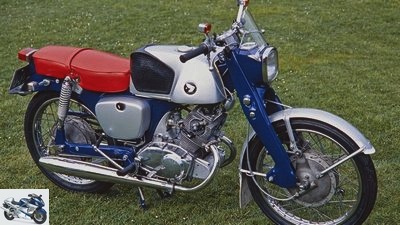
archive




26th pictures
Pictures: Japanese motorcycles from 1960 to 1970
go to Article
To home page
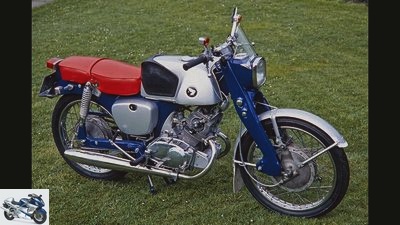
archive
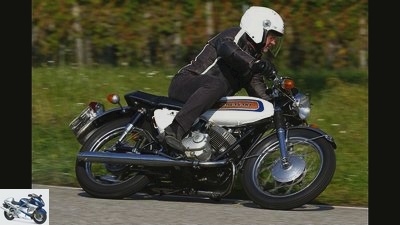
www.factstudio.de, Joachim Schahl
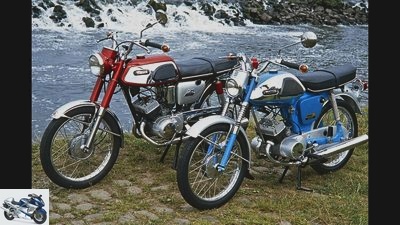
archive
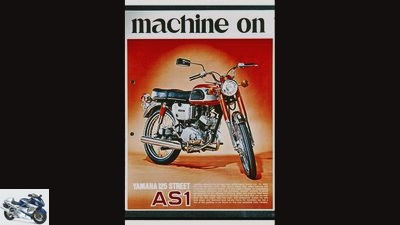
archive
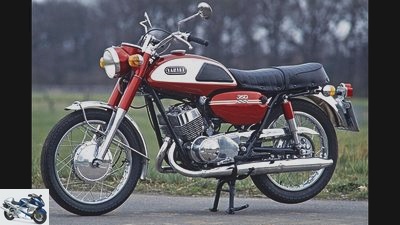
archive
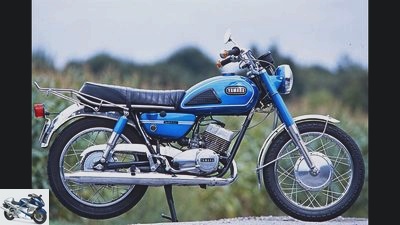
archive
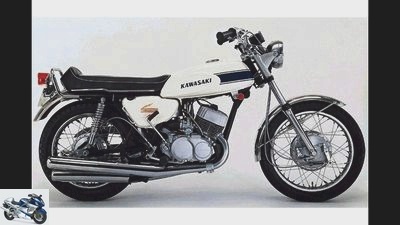
archive
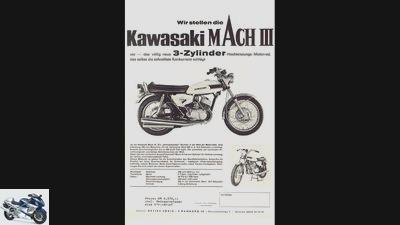
archive
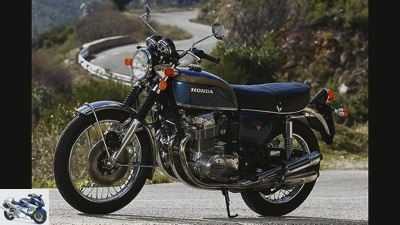
www.factstudio.de, Joachim Schahl

archive
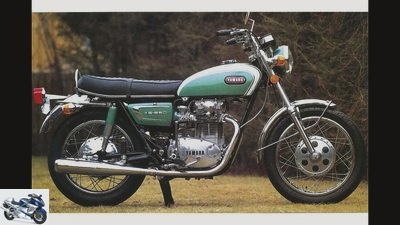
Schwab
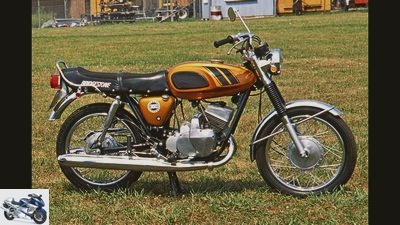
archive
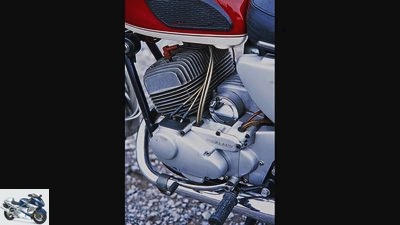
archive
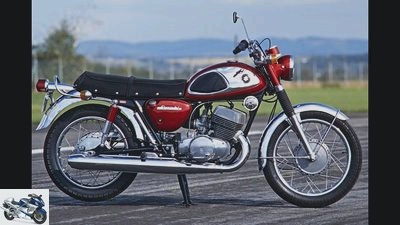
archive
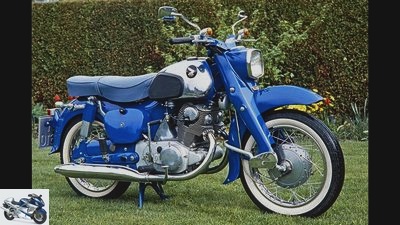
archive
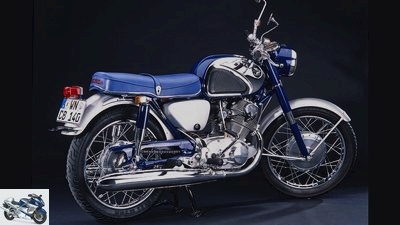
archive
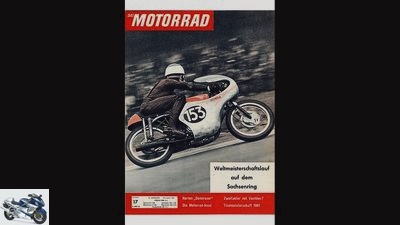
archive
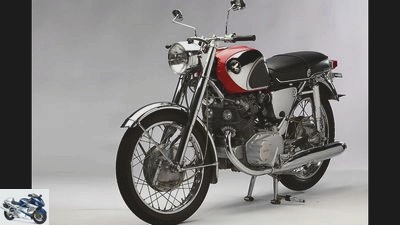
www.factstudio.de, Joachim Schahl
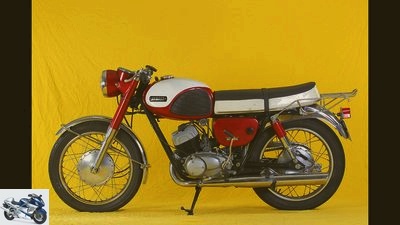
www.bilski-fotografie.de
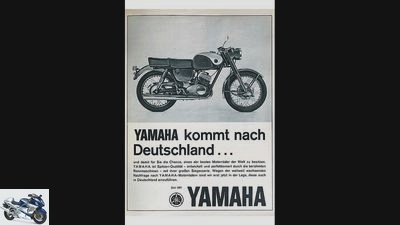
archive
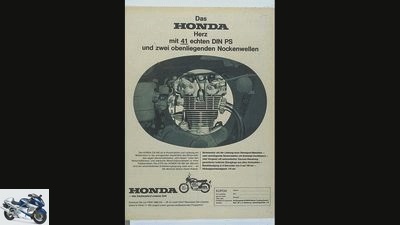
archive
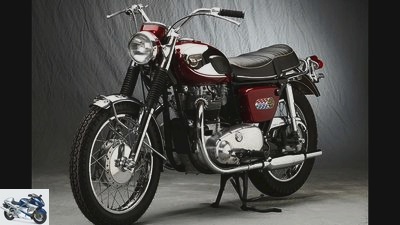
www.factstudio.de, Joachim Schahl
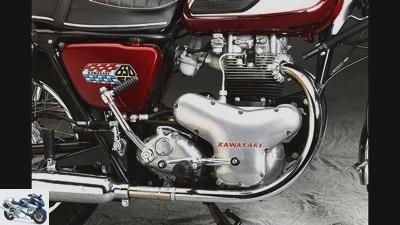
www.factstudio.de, Joachim Schahl
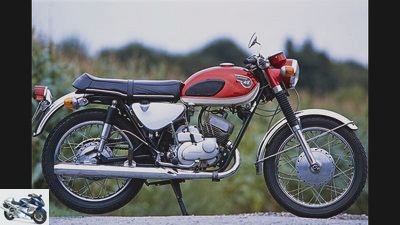
archive
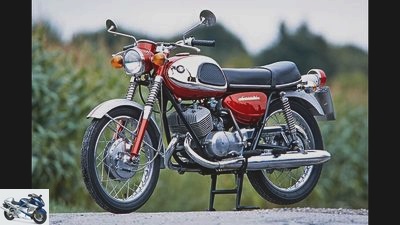
archive
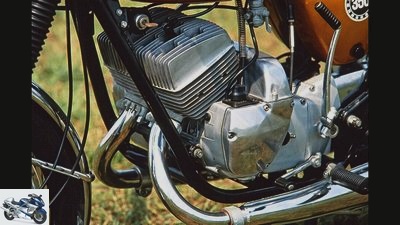
archive
1/26
For a short time, the rubber parts and tire manufacturer Bridgestone also got involved as a motorcycle manufacturer. From 1958 initially with small-volume single-cylinder two-stroke engines and rotary valve controls, which even ironed out the competitors on the domestic racetracks until the mid-1960s. The rest of the motorcycle world only took notice of Bridgestone bikes when the first motorcycles landed in the USA in 1963, which – like all Japanese – is the largest export market. The high-performance two-cylinder models in the modular system, which met a very high standard in terms of technology and equipment, caused a sensation there. First and foremost the 350 GTR, which appeared in 1967 and rounded off the range of 175 and 200 twins at the top. With rotary valve control, six-speed gearbox and a nominal 40 hp at 7500 rpm, the 350 GTR was ahead of the Japanese two-stroke competition at that time. Technology freaks also attracted a dry clutch, aluminum cylinders with hard chrome-plated raceways, pressurized oil lubrication of the crankshaft bearings, a duplex drum brake at the front, adjustable spring elements or the twelve-volt alternating current generator positioned behind the cylinders for a smaller width of the rotary valve motor. These were all well-known technology delicacies, but in combination at that time only the Bridgestone models 350 GTR and 350 GTO, a fashionable scrambler variant.
But of course the technical fireworks did not come at a special price. The Bridgestone 350 GTR cost almost a quarter more than a comparable motorcycle from Honda or Yamaha and was thus priced close to the high-displacement English twins. One of the reasons why the strong Bridgestone 350 GTR, which is exceptionally well made compared to other Japanese manufacturers, only came to Europe in homeopathic quantities. However, the technology, which was praised as stable, sometimes put an end to the unfocused pilots. This is due to the unusual shift pattern of the Bridgestone, in which the gears one to six are stepped down. When you step down, the first one engages again – even at 180 km / h! However, it was not because of this that Bridgestone suddenly ceased motorcycle production in 1971. According to rumors, domestic competition has put a lot of pressure on. And Bridgestone wanted to continue to deliver millions of original equipment tires to them!
Related articles
-
50 years of Kawasaki motorcycles
archive 10 pictures archive 1/10 1991 Kawasaki Zephyr The alternative to higher-faster-further: The naked bike with air-cooled four-cylinder took up…
-
Motorcycles not coming in 2007
11 pictures Yamaha 1/11 Yamaha 2/11 Yamaha 3/11 Yamaha 4/11 Yamaha 5/11 Say 6/11 Yamaha 7/11 Yamaha 8/11 Yamaha 9/11 Yamaha 10/11 Yamaha 11/11…
-
New registrations August 2020: most popular motorcycles
manufacturer 20th pictures manufacturer 1/20 First place among new motorcycle registrations in August 2020: BMW R 1250 GS with 685 units. New…
-
Nine 48 hp motorcycles tested for the A2 driver’s license
Jahn 44 pictures Jahn 1/44 Thanks Brussels: With the new tier driving license for young drivers and newcomers, the EU has given a hefty surcharge of 14…
-
The best-selling motorcycles of 2008
Jahn motorcycles The best-selling motorcycles of 2008 The best-selling motorcycles of 2008 Five top sellers and their owners Regardless of the market…
-
New registrations July 2020: most popular motorcycles
KTM 20th pictures manufacturer 1/20 First place among new motorcycle registrations in July 2020: BMW R 1250 GS with 1,253 units. New registrations from…
-
Royal Enfield will also build electric motorcycles from 2024
Photo: jkuenstle.de 30th pictures Royal Enfield 1/30 At EICMA 2017, Royal Enfield presented the two new models Interceptor INT 650 and Continental GT…
-
Top 20 motorcycles by women 1st half of 2019
Honda 20th pictures Honda 1/20 19th place among new motorcycle registrations for women in the first half of 2019: Honda NC 750 S with 79 registrations….
-
Zero electric motorcycles: first shop opened in Europe
Zero Motorcycles counselor traffic & business Zero electric motorcycles: first shop opened in Europe Zero electric motorcycles First shop opened in…
-
Scene: People and their motorcycles
fact motorcycles Scene: People and their motorcycles Scene: People and their motorcycles In the beginning it was the curve Regardless of whether it’s a…